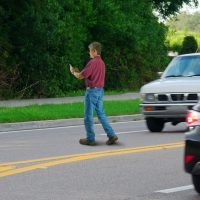What is Contributory Fault?

Contributory fault and comparative fault are legal concepts that affect whether and how a plaintiff can recover damages against a defendant after a car accident or other personal injury incident. Each state employs different rules concerning contributory or comparative fault; it’s important to understand the rules, and your rights, before pursuing your personal injury claims. Continue reading to learn about contributory fault and comparative fault and how they operate in California personal injury matters. If you’ve been hurt through someone else’s negligence in Lancaster or the Antelope Valley, call a seasoned Southern California personal injury lawyer to get the compensation you are owed.
Contributory Fault Means No Recovery for a Negligent Plaintiff
Contributory fault, also called contributory negligence, is a legal scheme concerning when and whether a plaintiff can recover after a negligence-based incident, such as a car accident. In the quintessential personal injury matter, one party is entirely to blame: A drunk driver runs a stoplight and hits a pedestrian in the middle of the crosswalk. In the real world, however, not every case is so clean-cut.
Contributory fault laws establish that a plaintiff who is in any way at fault for the incident cannot recover for their injuries. In the drunk driver example, let’s imagine the pedestrian was crossing the street while the “Don’t Walk” signal was flashing. It may be true that the drunk driver was “mostly” at fault for driving while intoxicated, but a judge or jury might find that the pedestrian was partially to blame because they crossed the street illegally. In a contributory fault state, the plaintiff pedestrian would not be entitled to any compensation from the drunk driver; the pedestrian was negligent, and that negligence contributed to the accident.
California’s Pure Comparative Negligence Rules
Contributory fault is an outdated and unnecessarily severe rule for personal injury matters. The vast majority of states have abandoned contributory fault rules in favor of “comparative negligence.” In a state with comparative negligence, a plaintiff who was partially to blame for an accident can still recover against the at-fault defendant, but the plaintiff’s recovery may be offset by their proportion of fault.
Consider the drunk driver/pedestrian example once again. Imagine the jury finds that the drunk driver was 75% to blame for causing the accident–they were, after all, driving while intoxicated, which is extremely reckless behavior. Jaywalking against a Don’t Walk signal is also against the rules, however, so the jury decides the pedestrian is 25% responsible for the accident. Assuming the plaintiff suffered $100,000 in personal injury damages, the plaintiff could collect a maximum of $75,000 from the defendant driver–$100,000 in damages less 25%, or $25,000.
Different states employ different levels of comparative fault. In some states, a partially at-fault plaintiff can recover from the defendant so long as the plaintiff was less than 50% to blame. If the judge or jury decides the plaintiff was 51% responsible for the accident, then the plaintiff is not entitled to recover any damages.
California employs “pure” comparative fault rules. In California, a plaintiff can recover damages from a negligent defendant so long as the defendant was in any way responsible for the plaintiff’s injuries, even if the plaintiff was more than 50% to blame.
In the drunk driver/pedestrian accident, for example, let’s say the driver swerved to avoid the pedestrian and crashed into a tree, leading to $10,000 in personal injury damages. The jury determines that the driver is 75% to blame while the pedestrian is 25% to blame, as before. Now, however, the driver sues the pedestrian. In California, the driver can collect up to 25% of their damages from the pedestrian, or $2,500 total, even though the crash was mostly the driver’s fault.
If you or someone you love has been injured or killed as a result of someone else’s negligence in Southern California, talk to a knowledgeable and successful Lancaster personal injury attorney about pursuing a claim for damages. Call the Kistler Law Firm at 661-206-6990.

